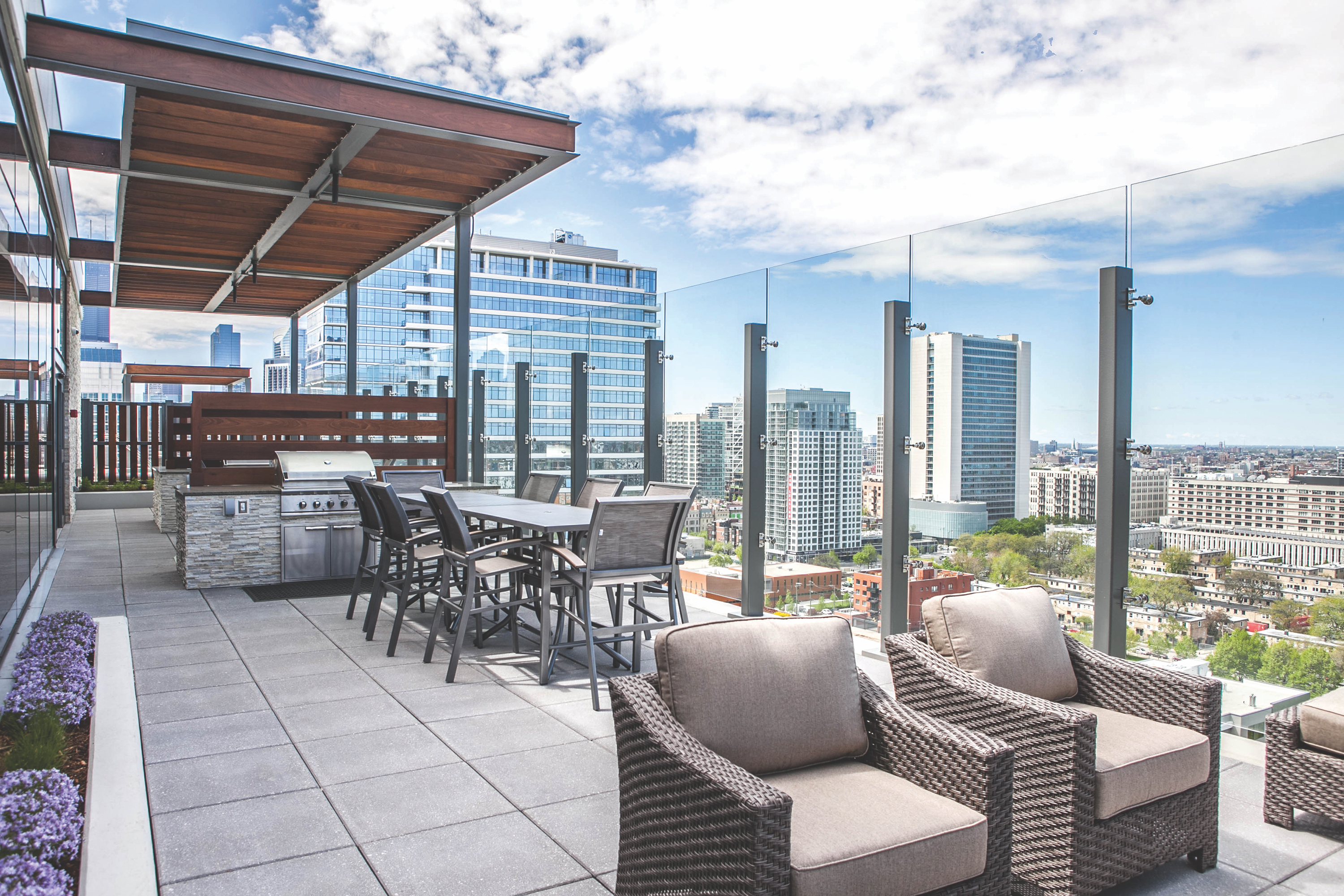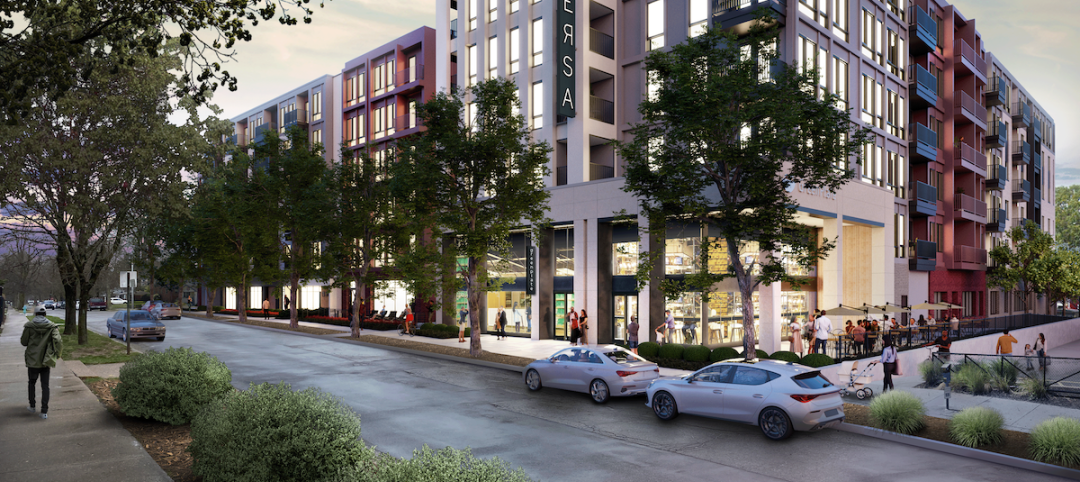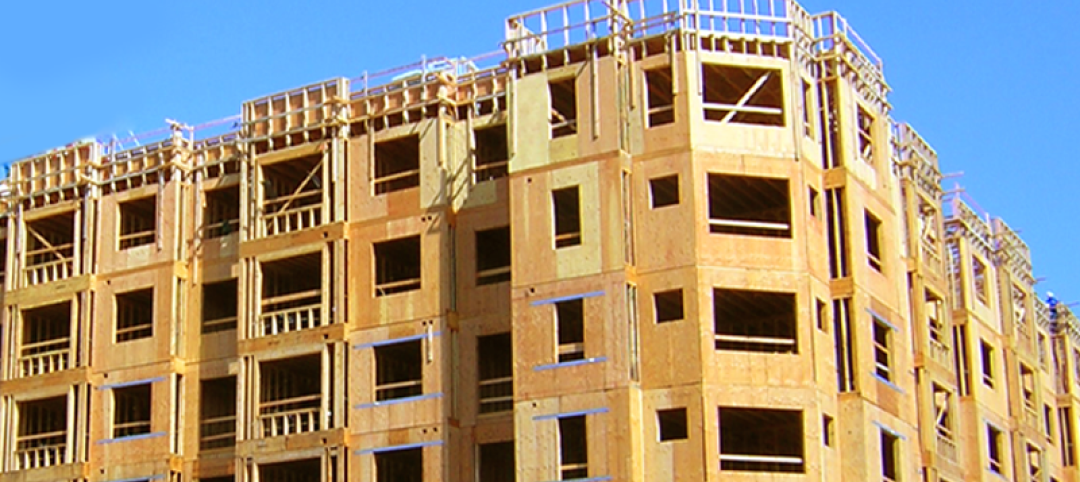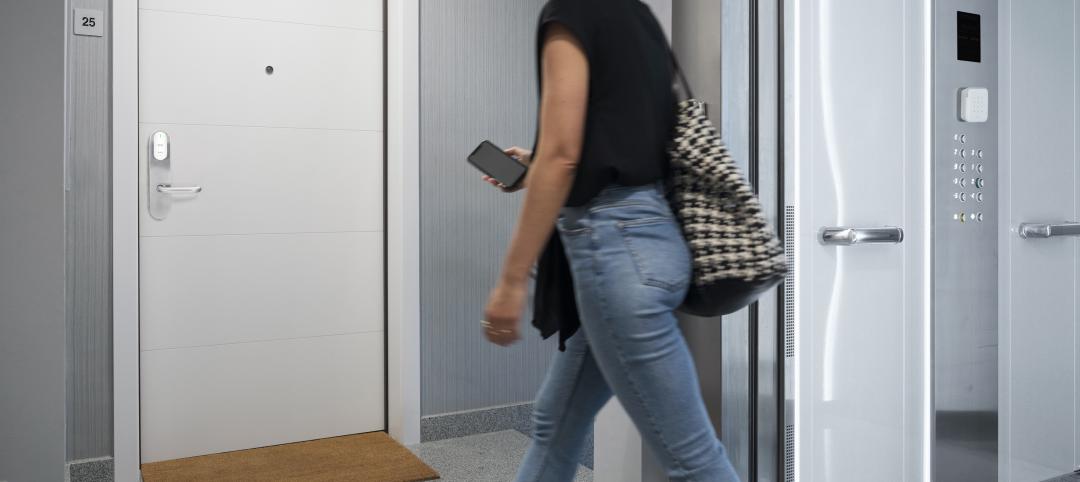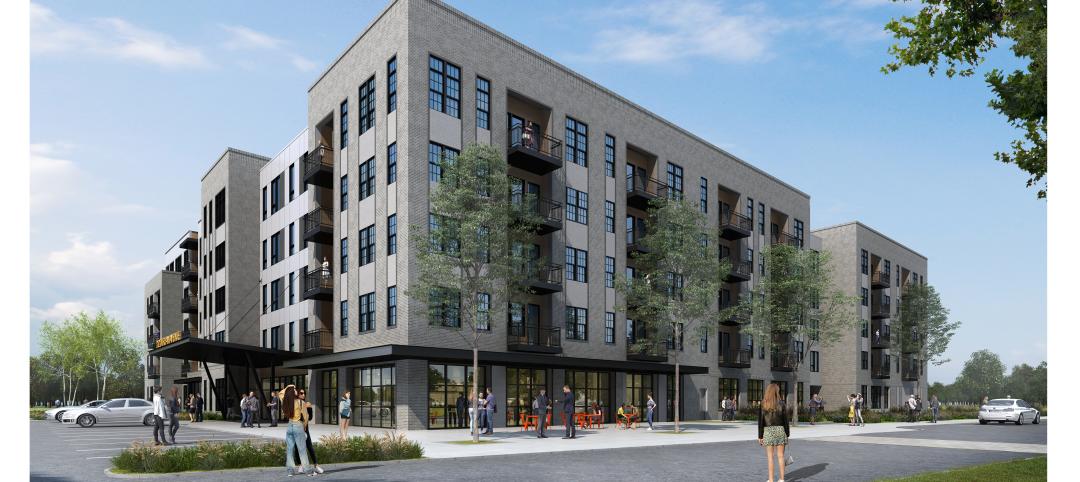A growing appetite for outdoor living spaces is fueling an expansion of outdoor kitchens on roof decks, terraces, and courtyards.
“In the last few years, we’ve seen an enormous increase in demand as high-end rental properties, condos, and townhomes take advantage of the indoor-outdoor living phenomenon,” said Mitch Slater, Founder/President, Danver Stainless Outdoor Kitchens (danver.com).
The design of these open-air amenity spaces has evolved from standalone grill stations to sophisticated meal preparation and dining environments that emphasize convenience and community. “These days, the goal is to get people to stay outside longer and have a great experience,” said Kristen Larkin, ASID, Associate Principal, FitzGerald Associates Architects, Chicago.
Although there’s no standard template for outdoor kitchens, designers and manufacturers we spoke with shared practical advice for ensuring these amenity spaces deliver safe, memorable experiences for residents and guests.
1. Design a simple, logical layout. L-shape, U-shape, and island layouts are common configurations for outdoor kitchens. Marieke Lacasse, ASLA, LEED AP BD+C, Principal at Seattle-based design firm GGLO, recommends locating them close to the pool area or party room to create a social hub and event space. “Outdoor kitchens are places to congregate around food, so it’s important to provide adequate food prep areas, sink space, and support surfaces,” she said.
‘Outdoor living is here to stay, so not having an outdoor kitchen really devalues your asset.’
—Marieke Lacasse, GGLO
Larkin likes to engage the management company that will maintain the space early in the design process, to ensure everyone’s goals are aligned. “I want to make sure any decisions I make on their behalf are in the long-term interests of the building owner,” she said.
2. Provide indoor-outdoor continuity. The growing popularity of sliding glass walls opens the door for outdoor kitchens to function as extensions of the interior environment. “Interior designers need to work closely with landscape architects to achieve design continuity between these areas,” said Jason Valentin, Associate IIDA, Interior Design Coordinator at Stantec.
Team collaboration extends to design details. “Don’t just think programmatically about how the spaces work together, but think also about the overall language of materiality such as patterns, colors, and metals,” said Lacasse. “Every little detail needs to be thought through to create a cohesive indoor-outdoor connection.”
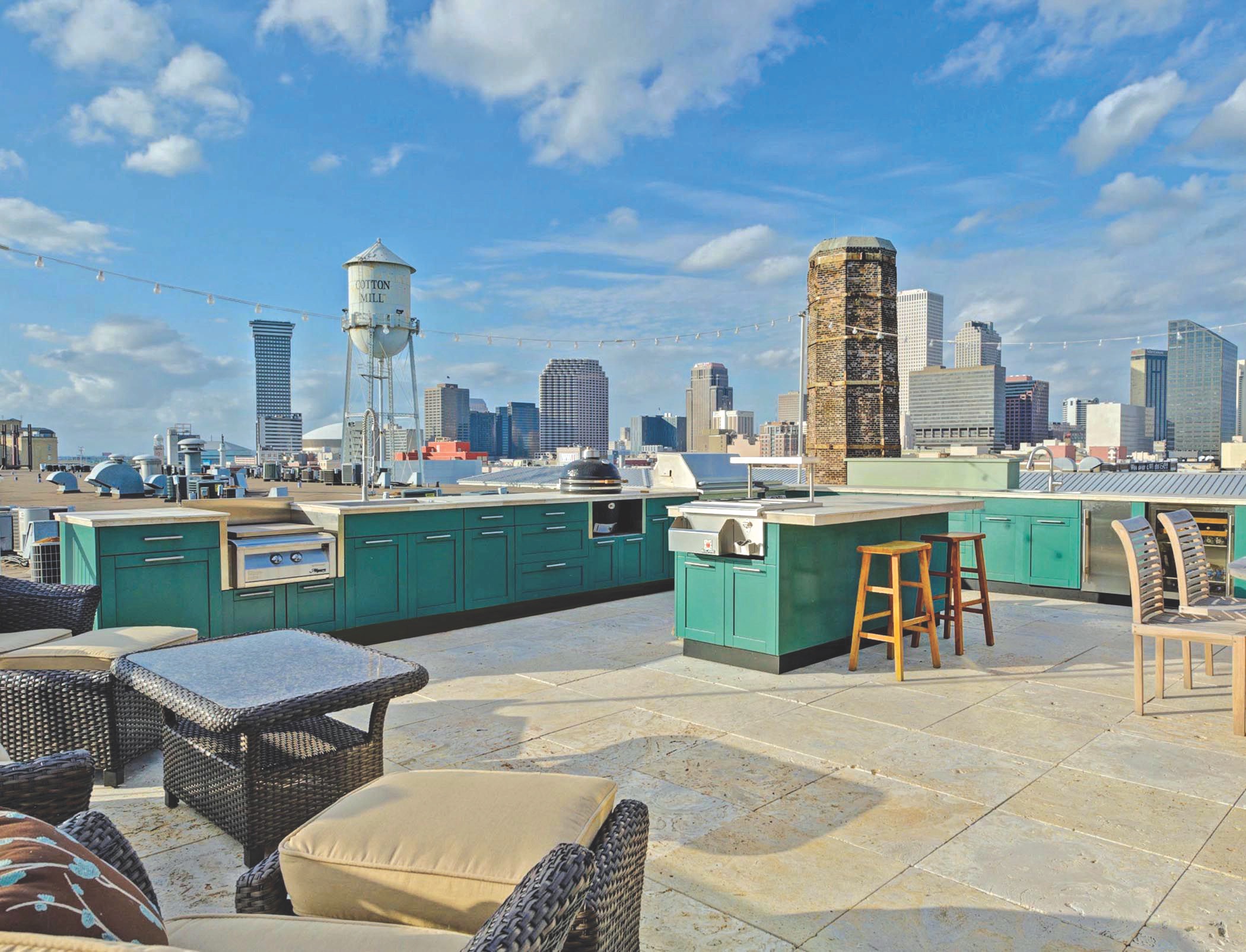
Toni Wendel, Owner of Olde World Builders and Remodelers, chose Danver Stainless Outdoor Kitchens cabinetry with green powder-coat finish for this condo building in New Orleans’s historic Warehouse District. Photo: Chad Chenier Photography
3. Select durable, easy-to-maintain materials. “We push for sturdy, stable baseline construction materials,” said Larkin, who favors steel trellises over all-wood structures. She recommends easy-to-maintain surfaces such as stainless steel cabinetry and granite countertops. Powder-coated stainless steel cabinetry offers added protection against moisture damage. Powder coatings can also be colored, opening up design possibilities.
The inevitable spills and splatters from shared grills should be considered when selecting flooring materials. “We’ve learned to use darker pavers in front of barbecue spaces, because grease is more visible on lighter-colored pavers and they stain easily,” said GGLO’s Lacasse.
4. Emphasize safety and accessibility. To protect residents and guests from the potential hazards of open flames and hot surfaces, locate grills, ovens, and fire pit tables in sheltered environments away from high-wind areas—or use a flameless electric grill. All adjacent structures should use fire-resistant building materials, such as fire-treated wood or light-gauge aluminum frame.
Designers also must follow ADA accessibility requirements for kitchens: providing adequate clearance areas and adhering to surface height requirements for sinks, appliances, cabinets, countertops, and food prep areas.
5. Take local climate into consideration. In colder climates sinks, icemakers, and refrigerators that have outdoor plumbing need to be winterized. “If an outdoor sink isn’t feasible, it’s important to consider adjacencies—how far will a resident have to carry a dirty spatula from the grill to an indoor sink to clean it?” said Larkin.
Humid environments and extreme weather events pose their own problems. “In Miami, we need to specify marine-grade materials such as plywood and cement board as a substrate for the millwork and cabinetry,” said Stantec’s Valentin. “We wouldn’t specify a typical laminate that we might use in an interior space.”

Pappageorge Haymes Partners installed this rooftop outdoor kitchen suite at LUXE on Madison (P II), a four-story, 44-unit apartment community in Chicago’s West Loop. Fifield Development is the developer. Photo courtesy Pappageorge Haymes Partners
6. Use lighting to enhance the ambience. Because nighttime is prime time for grilling, effective lighting is essential for maximizing safety and functionality. Our experts recommend using subtle, indirect lighting strategies that meet local outdoor lighting code requirements while maintaining an ambience conducive to a relaxing night under the stars.
Wind can play havoc with decorative lighting fixtures. FitzGerald’s Larkin suggests using softer bounce lights and integrating the lighting into a trellis or overhead structure to make the space feel more intimate.
7. Offer cooking options. Multifamily developers are expanding their cooking repertoire to include electric cooktops, smokers, and pizza ovens. Manufacturers like Danver offer commercial-grade bartending stations and mobile F&B service carts.
Properties with space or budget constraints can still raise their game. Thor Kitchen (thorkitchen.com) offers a compact modular outdoor kitchen suite that has a gas grill, side burner, wood-burning pizza oven, refrigerator drawers, grill cabinet, sink cabinet, corner cabinet, and appliance cabinet. Danver’s Post and Panel System employs powder-coated stainless steel panels that ship flat and can be installed in the cabinetry even with the countertop in place.
Do outdoor kitchens enhance a property’s marketability? Yes, said GGLO’s Lacasse. “All the best properties have them,” she noted. “The outdoor living trend is definitely here to stay, so not having an outdoor kitchen really devalues your asset.”
Related Stories
Multifamily Housing | May 30, 2023
Milhaus, Gershman Partners, and Citimark close on $70 million multifamily development in Indy
Versa will bring 233 studio and one- and two-bedroom apartments to Indianapolis's $271 million, Class-A Broad Ripple Village development enterprise.
Multifamily Housing | May 23, 2023
One out of three office buildings in largest U.S. cities are suitable for residential conversion
Roughly one in three office buildings in the largest U.S. cities are well suited to be converted to multifamily residential properties, according to a study by global real estate firm Avison Young. Some 6,206 buildings across 10 U.S. cities present viable opportunities for conversion to residential use.
Multifamily Housing | May 19, 2023
Biden administration beefs up energy efficiency standards on new federally funded housing
The Biden Administration recently moved to require more stringent energy efficiency standards on federally funded housing projects. Developers building homes with taxpayer funds will have to construct to the International Energy Conservation Code (IECC) 2021 for low-density housing and American Society of Heating, Refrigerating and Air-Conditioning Engineers ASHRAE 90.1 for multi-family projects.
Sponsored | Multifamily Housing | May 19, 2023
Shear Wall Selection for Wood-Framed Buildings
From wall bracing to FTAO, there are many ways to secure the walls of a building. Learn how to evaluate which method is best for a project.
Sponsored | Multifamily Housing | May 17, 2023
The Key To Multifamily Access Control — Consistent Resident Experiences
Explore the challenges of multifamily access control and discover the key to consistent user experiences with a resident-first approach and open platforms.
Affordable Housing | May 17, 2023
Affordable housing advocates push for community-owned homes over investment properties
Panelists participating in a recent webinar hosted by the Urban Institute discussed various actions that could help alleviate the nation’s affordable housing crisis. Among the possible remedies: inclusionary zoning policies, various reforms to increase local affordable housing stock, and fees on new development to offset the impact on public infrastructure.
Multifamily Housing | May 16, 2023
Legislators aim to make office-to-housing conversions easier
Lawmakers around the country are looking for ways to spur conversions of office space to residential use.cSuch projects come with challenges such as inadequate plumbing, not enough exterior-facing windows, and footprints that don’t easily lend themselves to residential use. These conditions raise the cost for developers.
Multifamily Housing | May 12, 2023
An industrial ‘eyesore’ is getting new life as an apartment complex
The project, in Metuchen, N.J., includes significant improvements to a nearby wildlife preserve.
Senior Living Design | May 8, 2023
Seattle senior living community aims to be world’s first to achieve Living Building Challenge designation
Aegis Living Lake Union in Seattle is the world’s first assisted living community designed to meet the rigorous Living Building Challenge certification. Completed in 2022, the Ankrom Moisan-designed, 70,000 sf-building is fully electrified. All commercial dryers, domestic hot water, and kitchen equipment are powered by electricity in lieu of gas, which reduces the facility’s carbon footprint.


